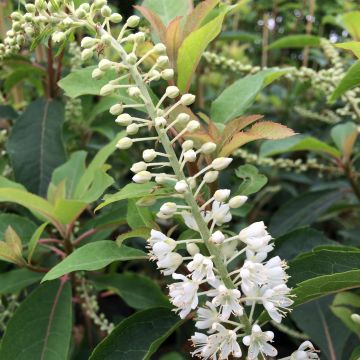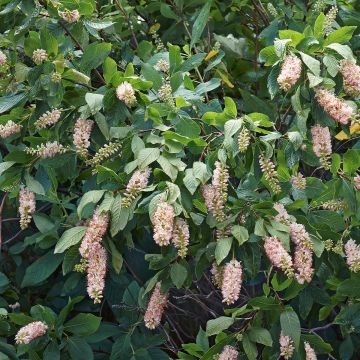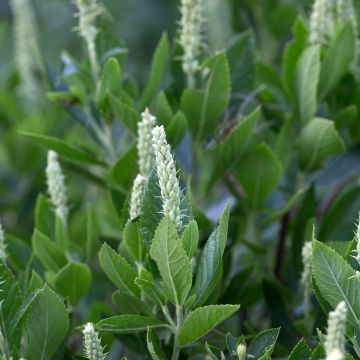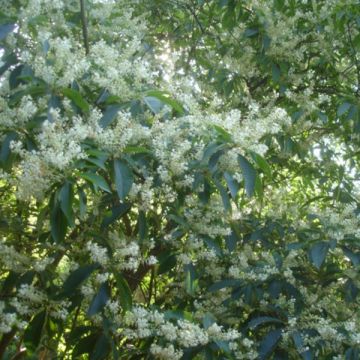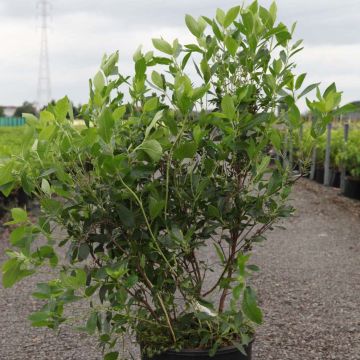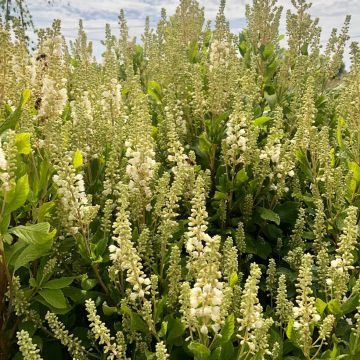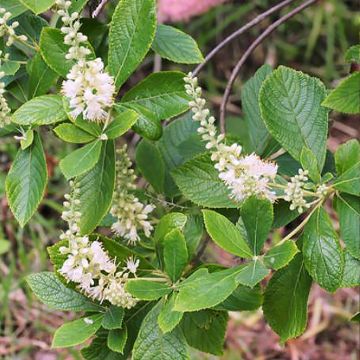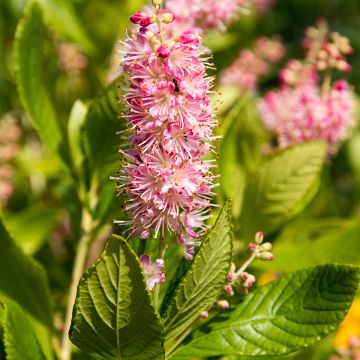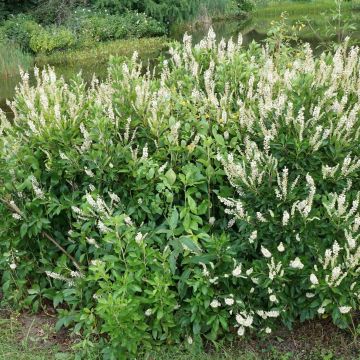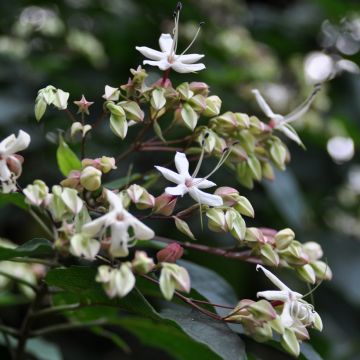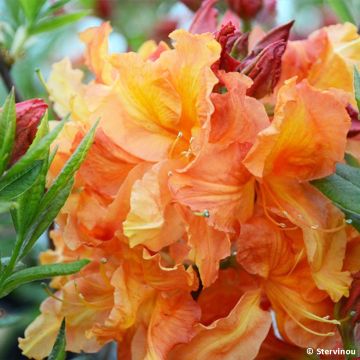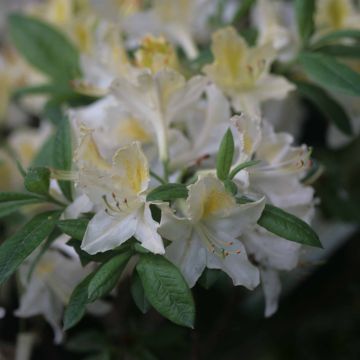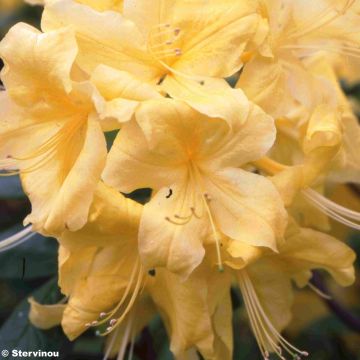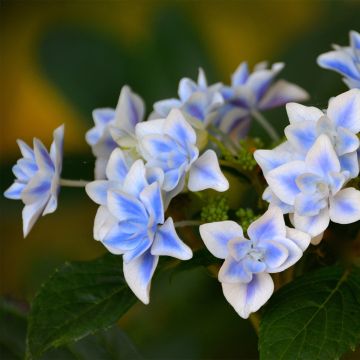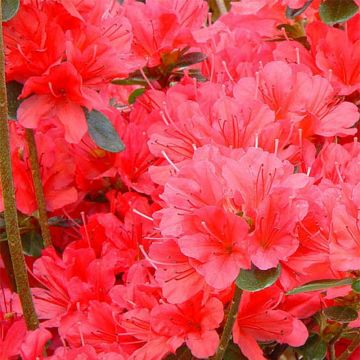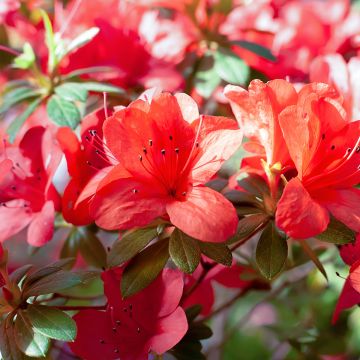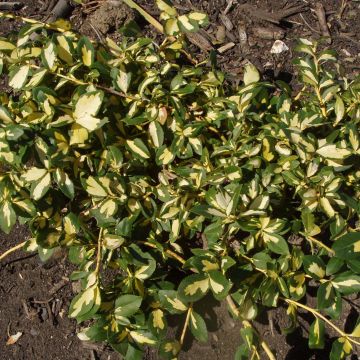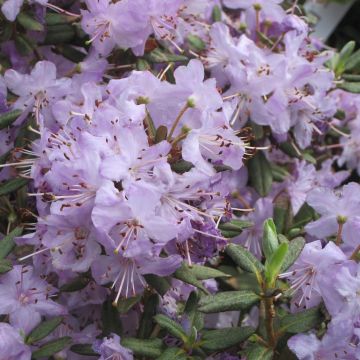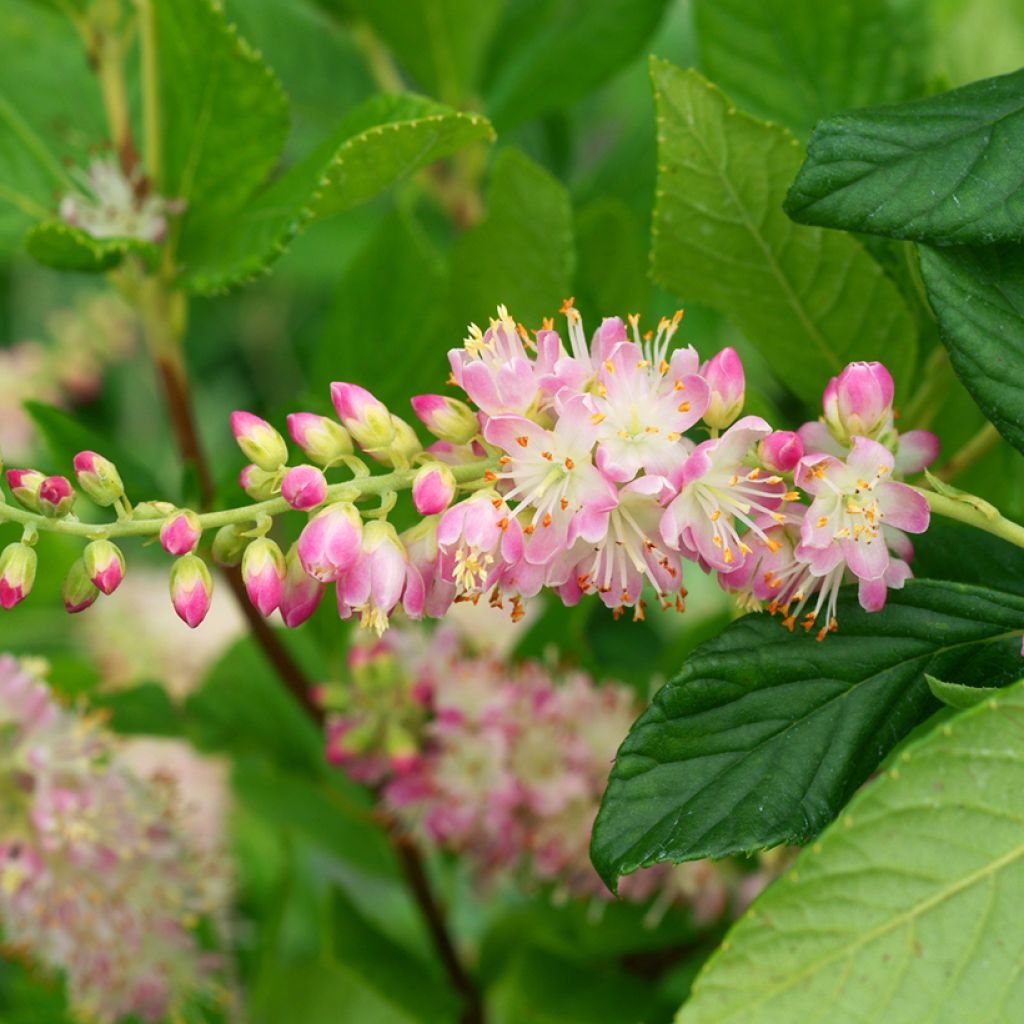

Clethra alnifolia Pink Spire - Sweet pepperbush
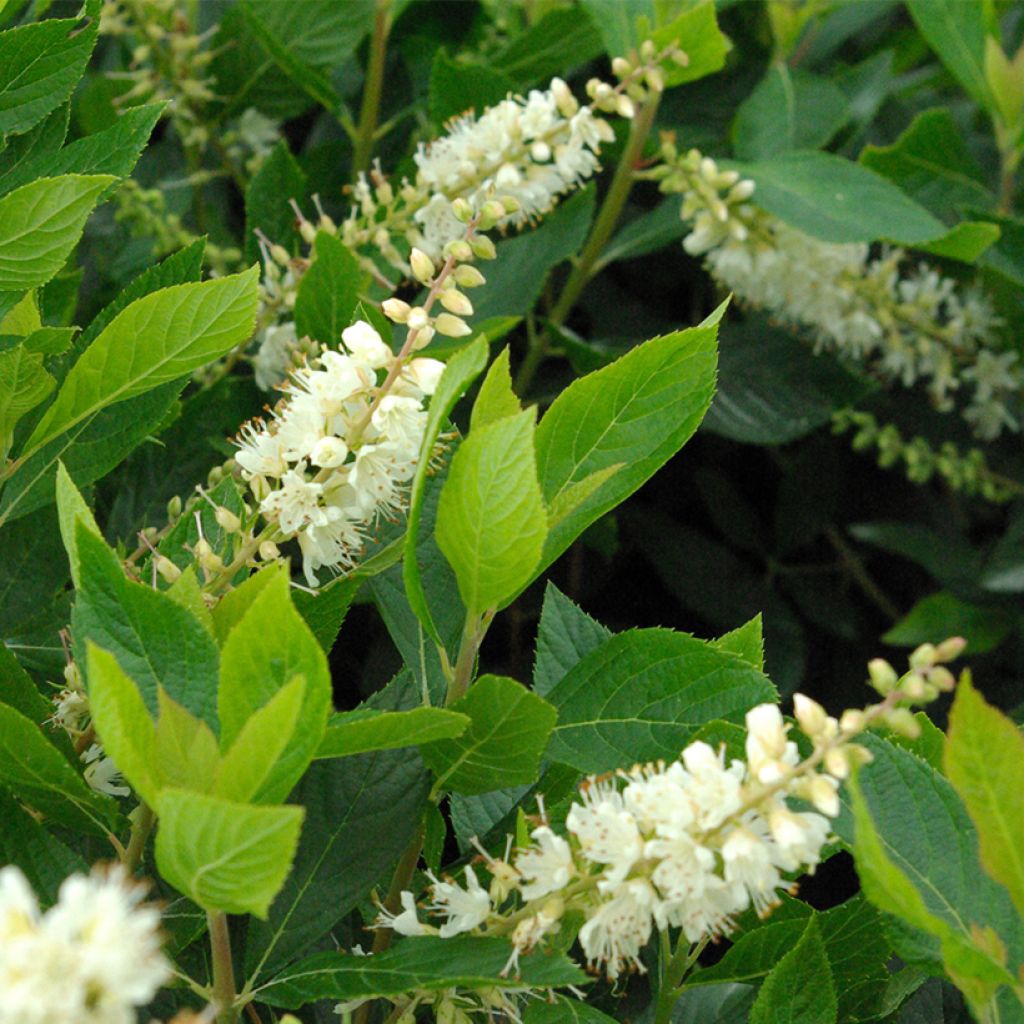

Clethra alnifolia Pink Spire - Sweet pepperbush
Clethra alnifolia Pink Spire - Sweet pepperbush
Clethra alnifolia Pink Spire
Coastal sweetpepperbush, Summer sweet
This item cannot be shipped to the selected country
Delivery charge from €5.90
More information
Delivery charge from €5.90
More information
Schedule delivery date,
and select date in basket
This plant carries a 24 months recovery warranty
More information
We guarantee the quality of our plants for a full growing cycle, and will replace at our expense any plant that fails to recover under normal climatic and planting conditions.
From €5.90 for pickup delivery and €6.90 for home delivery
Express home delivery from €8.90.
Does this plant fit my garden?
Set up your Plantfit profile →
Description
Clethra alnifolia Ruby Spice is a variety of Sweet Pepperbush with a small habit, appreciated for its pink flowering instead of white like the species. With its bushy silhouette and clusters of pink flowers, reminiscent of callistemons, this shrub brings a touch of exoticism to cool and slightly shaded areas of the garden, often lacking in flowers at the end of summer, just like its autumn foliage with its golden hues enlivens the undergrowth at the end of the season. Clethra are shrubs that prefer humus-rich, non-chalky, moist to wet soils. They thrive in the same conditions as rhododendrons and autumn camellias, forming beautiful combinations with them.
Clethra alnifolia is a deciduous shrub with semi-suckering roots native to moist forests and marshy areas in the eastern United States. Its natural range extends from southern Maine to eastern Texas. In the wild, it forms small thickets that can reach 3m (9 ft 10 in) in all directions. It is highly hardy, at least down to -20°C (-4 °F).
The 'Ruby Spice' cultivar forms a compact bush that rarely exceeds 1m (3 ft 4 in) to 1.20m (3 ft 11 in) in all directions. It bears obovate, smooth, serrated leaves measuring 5 to 10cm (2 to 3.9 in) in length, arranged alternately. They are a tender green in summer and turn warm shades of yellow, gold, and orange in autumn before falling. Flowering usually occurs in September, depending on the climate. It takes the form of upright spikes measuring 8 to 15cm (3.1 to 5.9 in) in height, composed of multiple small, campanulate, pink, downy, and fragrant flowers. They open from the base to the top of the flower head. Their honey-like scent attracts many pollinating insects. The flowers are followed by small round fruits, grouped in slender clusters, which remain decorative on the branches in winter if not eaten by birds. These fruits, resembling peppercorns, have earned this shrub its name of 'sweet pepperbush' in the United States.
Clethra alnifolia Ruby Spice will only thrive in acidic and light soils that never dry out, in a partially shaded position. It finds its place in ericaceous beds or at the base of large deciduous trees, if the soil remains moist in summer. Pair it with small rhododendrons in shades of mauve, white, or pink, camellias, Kalmia latifolia, and winter-flowering heathers that will take over after its own flowering. As it tolerates container cultivation well, use it to decorate a terrace or patio.
Plant habit
Flowering
Foliage
Botanical data
Clethra
alnifolia
Pink Spire
Clethraceae
Coastal sweetpepperbush, Summer sweet
Cultivar or hybrid
Other Clethra
Planting and care
The Clethra alnifolia Ruby Spice, hardy up to a minimum of -20°C (-4 °F), is preferably planted in spring, in soil that remains moist all year round, light, well-drained, and acidic in partially shaded conditions. Adding leaf compost during planting is necessary. This bush cannot tolerate limestone or drought. Trim the faded flowers and, in winter, remove old stems. It is naturally resistant to diseases and parasites.
Planting period
Intended location
Care
This item has not been reviewed yet - be the first to leave a review about it.
Shrubs for semi-shade
Haven't found what you were looking for?
Hardiness is the lowest winter temperature a plant can endure without suffering serious damage or even dying. However, hardiness is affected by location (a sheltered area, such as a patio), protection (winter cover) and soil type (hardiness is improved by well-drained soil).

Photo Sharing Terms & Conditions
In order to encourage gardeners to interact and share their experiences, Promesse de fleurs offers various media enabling content to be uploaded onto its Site - in particular via the ‘Photo sharing’ module.
The User agrees to refrain from:
- Posting any content that is illegal, prejudicial, insulting, racist, inciteful to hatred, revisionist, contrary to public decency, that infringes on privacy or on the privacy rights of third parties, in particular the publicity rights of persons and goods, intellectual property rights, or the right to privacy.
- Submitting content on behalf of a third party;
- Impersonate the identity of a third party and/or publish any personal information about a third party;
In general, the User undertakes to refrain from any unethical behaviour.
All Content (in particular text, comments, files, images, photos, videos, creative works, etc.), which may be subject to property or intellectual property rights, image or other private rights, shall remain the property of the User, subject to the limited rights granted by the terms of the licence granted by Promesse de fleurs as stated below. Users are at liberty to publish or not to publish such Content on the Site, notably via the ‘Photo Sharing’ facility, and accept that this Content shall be made public and freely accessible, notably on the Internet.
Users further acknowledge, undertake to have ,and guarantee that they hold all necessary rights and permissions to publish such material on the Site, in particular with regard to the legislation in force pertaining to any privacy, property, intellectual property, image, or contractual rights, or rights of any other nature. By publishing such Content on the Site, Users acknowledge accepting full liability as publishers of the Content within the meaning of the law, and grant Promesse de fleurs, free of charge, an inclusive, worldwide licence for the said Content for the entire duration of its publication, including all reproduction, representation, up/downloading, displaying, performing, transmission, and storage rights.
Users also grant permission for their name to be linked to the Content and accept that this link may not always be made available.
By engaging in posting material, Users consent to their Content becoming automatically accessible on the Internet, in particular on other sites and/or blogs and/or web pages of the Promesse de fleurs site, including in particular social pages and the Promesse de fleurs catalogue.
Users may secure the removal of entrusted content free of charge by issuing a simple request via our contact form.

































